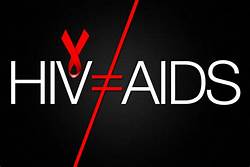Before dealing intimately about HIV and Aids, let us first check out what exactly HIV and Aids are:
What is HIV?
HIV may be a virus that attacks the system, which is our body’s natural defence against illness. The virus destroys a kind of white blood corpuscle within the system called a T-helper cell, and makes copies of it inside these cells. T-helper cells also are mentioned as CD4 cells.
As HIV destroys more CD4 cells and makes more copies of it, it gradually breaks down a person’s system. This suggests someone living with HIV, who is not receiving treatment, will find it harder and harder to repel infections and diseases.
If HIV is left untreated, it is going to take up to 10 or 15 years for the system to be so severely damaged, it cannot defend itself in the least. However, the speed HIV progresses will vary counting on age, health and background.
Let us check out the essential facts about HIV
Basic facts about HIV
HIV stands for human immunodeficiency virus.
There is effective antiretroviral treatment available so people with HIV can live a traditional, healthy life.
The earlier HIV is diagnosed; the earlier treatment can start – resulting in better future health.
HIV is omnipresent and is found in semen, blood, vaginal and anal fluids, and breast milk.
HIV can never be transmitted through sweat, saliva or urine.
Using male condoms or female condoms during sex is that the best thanks to prevent HIV and other sexually transmitted infections.
If there is a need to inject drugs, then use a clean needle and syringe, and never share equipment.
If you are pregnant and living with HIV, the virus in your blood could pass into your baby’s body, or after parturition through breastfeeding. Taking HIV treatment virtually eliminates this risk.
What is AIDS?
AIDS is not an epidemic but a group of symptoms or syndrome caused by the HIV virus. An individual is claimed to possess AIDS when their system is just too weak to repel infection, and that they develop certain defining symptoms and illnesses. This is often the last stage of HIV, when the infection is extremely advanced, and if left untreated will cause death
Basic facts about AIDS
AIDS stands for acquired immune deficiency syndrome.
AIDS is additionally mentioned as advanced HIV infection or late-stage HIV.
AIDS may be a set of symptoms and illnesses that develop as results of advanced HIV infection, which has destroyed the system.
Treatment for HIV means more people are staying well, with fewer people developing AIDS.
Although there is currently no cure for HIV with the proper treatment and support, people with HIV can live long and healthy lives. To try to this, it is especially important to require treatment correctly and affect any possible side effects.
HIV Medication
Several different classes of medicines for HIV are available. They are divided into seven different groups and include NRTIs, NNRTIs, NtRTIs, protease inhibitors, entry inhibitors, integrase inhibitors, and combination medications. In most cases, people with HIV or AIDS use medications from several of those classes. employing a combination of medicines helps to stop the HIV virus from becoming immune to one or more of the drugs.
A number of medicines are approved for the treatment of HIV and AIDS. These medications fall under variety of various classes, of HIV drugs.
The Different Classes of HIV Drug Treatments
The available classes of medicines for HIV include the following:
Nucleoside polymerase inhibitors (NRTIs)
Non-nucleoside polymerase inhibitors (NNRTIs)
Nucleotide polymerase inhibitors (NtRTIs)
Protease inhibitors
Entry inhibitors, including fusion inhibitors
Integrase inhibitors
Combination medications from different classes.
These medicines work by blocking a process that the HIV virus needs to multiply.
HIV is that the virus that causes AIDS. Like other viruses, HIV must use an individual’s own cells to breed. However, HIV may be a quite different from other viruses because it must first convert its genetic material from RNA to DNA. The DNA genes allow HIV to multiply.
A Final Word on HIV Medications
Although there is no cure for HIV or AIDS, several options are available to assist people with HIV or AIDS liver longer, healthier lives. Several different classes of HIV medications add alternative ways, and most of the people have to take a mixture of medicine from several different classes.




